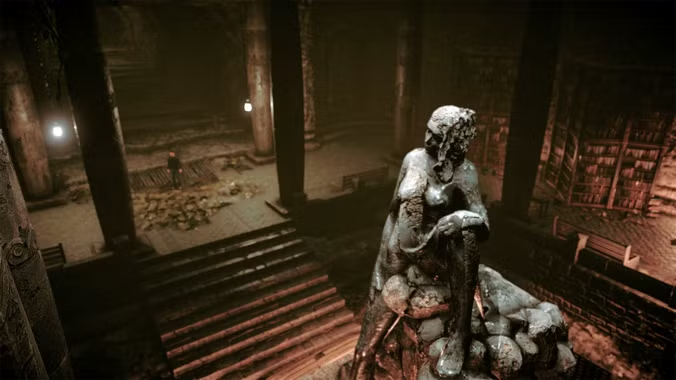
Colina: Legacy opens with Alex waking up alone in his grandmother’s house after a trip, finding the place silent and his family missing. Something feels terribly wrong as he explores the house and its dark secrets. Alex must use his flashlight, collect glyphs, solve puzzles, and evade unseen threats throughout the house and surrounding woods. He must survive the night while piecing together what caused the horror, fighting not only strange creatures but also his own creeping dread.
Developed and published by Chance6 Studios, Colina: Legacy launched on September 13, 2018, for PC through Steam, later arriving on other platforms including Xbox One. The project is by an indie team that aimed to evoke classic survival horror vibes with modern polish. The gameplay and design pay homage to older horror games by using limited combat, environmental storytelling, and a sense of isolation. Though not a major budget title, it has earned attention for its atmosphere, visuals, and pacing.












Gameplay
In Colina: Legacy, Alex explores the grandmother’s house, the woods, and hidden outdoor areas to uncover what happened. He uses a flashlight as both tool and weapon, since combat is limited and often risky. Glyphs gathered allow interaction with certain objects or solving puzzles, and enemies must often be avoided or outwitted rather than confronted. The experience leans heavily on exploration, puzzle solving, and tension, with save points or checkpoints that force careful resource management. Enemies sometimes deal fatal damage, increasing the sense of danger.
Visuals & Style
The game presents a moody, foreboding atmosphere with detailed interiors and dense shadows. Lighting plays a major role; flickering bulbs, moonlight through windows, and dim lamps create dramatic contrasts. Sound design enhances unease through creaks, distant woods sounds, echoes, and sudden audio cues. The visual style avoids flashy effects, instead focusing on making environments feel lived-in and uncanny. The art and world design combine rustic domestic spaces with horror elements to amplify dread.
Importance in Survival Horror History
Colina: Legacy is notable for how it revives traditional horror tropes in an indie format: limited resources, vulnerable protagonist, minimal combat, and environmental horror. It shows that smaller studios can capture the mood of classic horror games without huge budgets. Its structure of exploration, puzzling, and atmosphere rather than confrontation contributes to the tradition of survival horror while offering story driven dread rather than action.
Reception vs Historical Value
Reviews for Colina: Legacy have been mixed to positive. Many players and critics compliment its chilling atmosphere, intriguing story, and how it builds tension. Some criticism centers on puzzles that feel too obscure or frustrating, occasional glitches, and that enemy behaviors can feel inconsistent. Over time it has gathered a modest cult following among fans of indie horror games who enjoy slower paced, mood heavy experiences. In historical terms, Colina: Legacy is valued more for its ambiance and horror feeling than for innovation or technical feats.
Availability & Collectibility

Colina: Legacy is available digitally via Steam for PC (Windows, Linux), and on Xbox platforms. It has no widely known physical release, making digital versions the main way to own it. The relatively low price and indie status mean it’s accessible, though collectors seeking rare physical editions or regional releases may need to look for imported versions or limited bundles. Because it is frequently on sale digitally, many horror fans can try it without heavy cost.
Get it on:
Steam: COLINA: Legacy on Steam
Xbox: Buy COLINA: Legacy | Xbox
Trailer:
